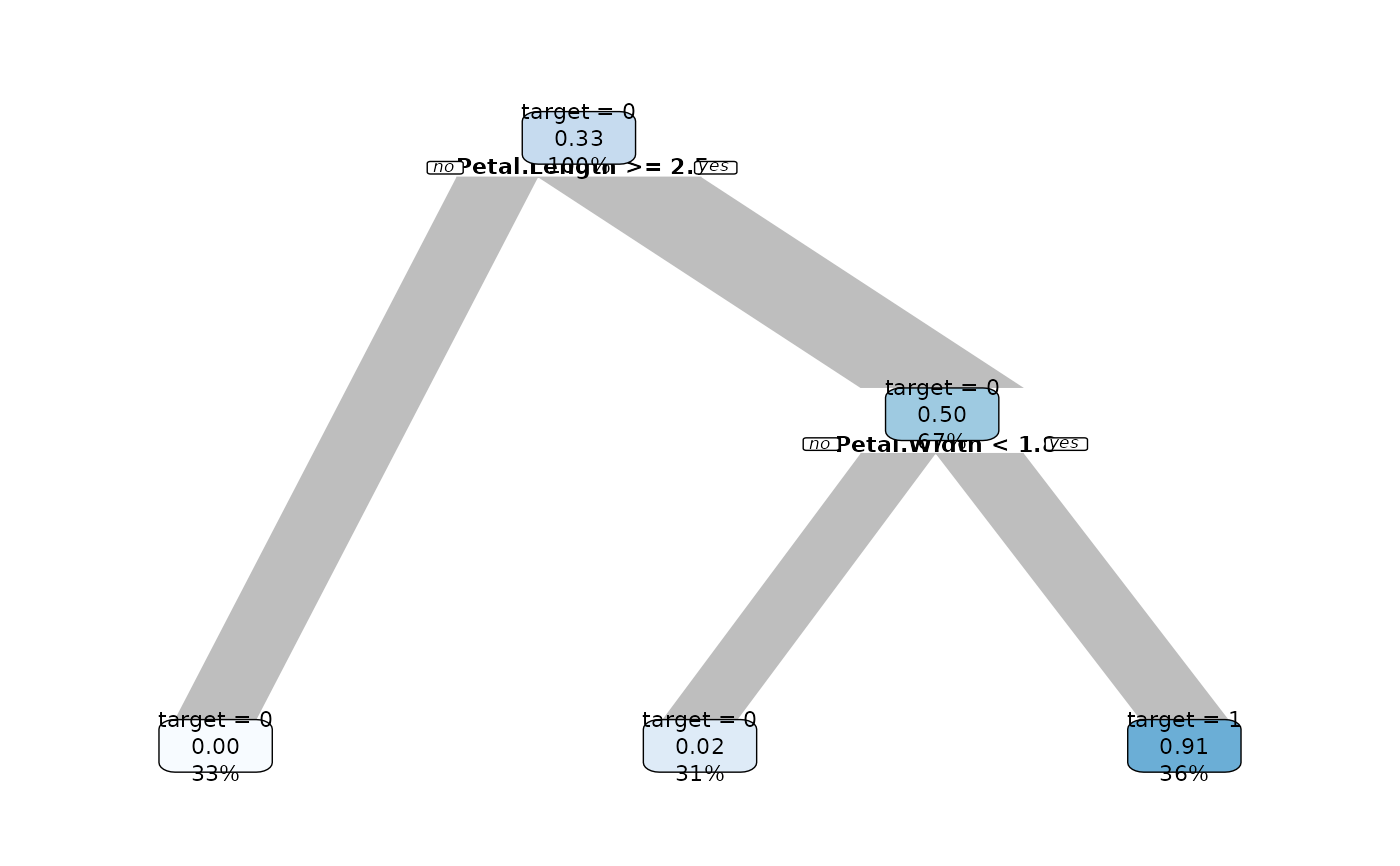
Explain a target using a simple decision tree (classification or regression)
Source:R/explain.R
explain_tree.RdExplain a target using a simple decision tree (classification or regression)
Usage
explain_tree(
data,
target,
n,
max_cat = 10,
max_target_cat = 5,
maxdepth = 3,
minsplit = 20,
cp = 0,
weights = NA,
size = 0.7,
out = "plot",
...
)Arguments
- data
A dataset
- target
Target variable
- n
weights variable (for count data)
- max_cat
Drop categorical variables with higher number of levels
- max_target_cat
Maximum number of categories to be plotted for target (except NA)
- maxdepth
Set the maximum depth of any node of the final tree, with the root node counted as depth 0. Maximum value 30 (as node numbers have to be stored in 32-bit signed integer types).
- minsplit
the minimum number of observations that must exist in a node in order for a split to be attempted.
- cp
complexity parameter. Any split that does not decrease the overall lack of fit by a factor of
cpis not attempted. For instance, withanovasplitting, this means that the overall R-squared must increase bycpat each step. The main role of this parameter is to save computing time by pruning off splits that are obviously not worthwhile. Essentially,the user informs the program that any split which does not improve the fit bycpwill likely be pruned off by cross-validation, and that hence the program need not pursue it.- weights
optional case weights.
- size
Text size of plot
- out
Output of function: "plot" | "model"
- ...
Further arguments
Examples
data <- iris
data$is_versicolor <- ifelse(iris$Species == "versicolor", 1, 0)
data$Species <- NULL
explain_tree(data, target = is_versicolor)
